Stories
Nightclubbing in 80s Auckland
1980s
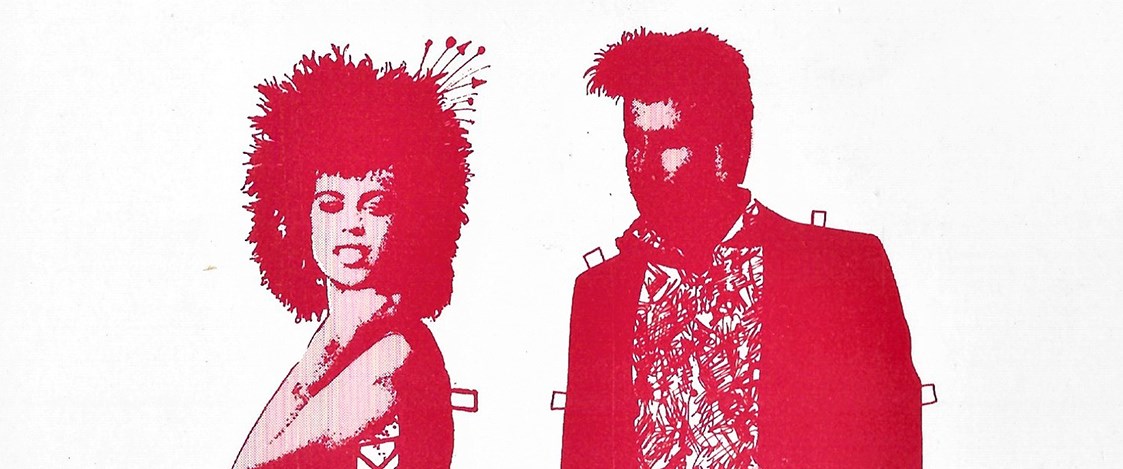
Auckland City was booming in the 1980s and sparkled with the glitz, glamour and mirror glass of corporate success during daylight hours but after dark the sparkle moved downstairs. On Thursday, Friday and Saturday night après work it was the mirror ball that took centre stage at the newest and hottest party venues around town.
Nightclubs like Zanzibar, the Six Month Club and the club that Colin Hogg called "Auckland’s most relentlessly trendy disco", the Brat, popped up in converted warehouses, basements and empty floors in and around the city. They became the cool place to be and especially to be seen.
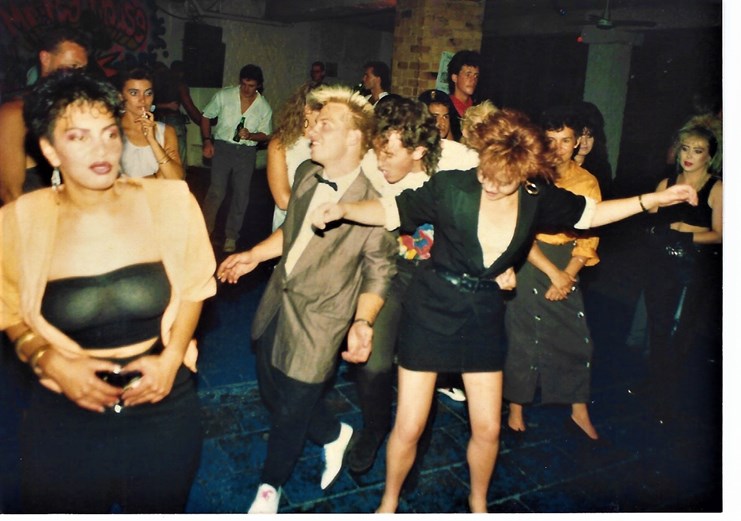
The Brat nightclub, circa 1986. Photo © Richard Scowen.
The clubbing scene was all about fashion, hair and dressing up and clubs were rated on the qualities of their clientèle. Patrick Steel, consummate 1980s fashion designer and party boy about town, gave ChaCha magazine a rundown of the clubs. "Alfies", he said, "was full of hairdressers, at Staircase everyone is staring at everyone else and no one is having a good time and at Steps the music is great but there are so many ugly people – if there is a lack of style – it is there."
Stairs are a common trope with clubs, invariably upstairs or downstairs, where you climb or descend into a heady haze of hairspray and dry ice. There was no hanging around outside in the street smoking, all the action, including smoking, happened indoors between 10pm and 3am with a well-stocked bar or two, a DJ booth and a large lit dance floor. Bring your own sex appeal and dress to kill was the unspoken invitation to punters.
Clubbing had its own dress code. While it was certainly influenced by the extravagance of corporate business fashion with its gaudy colours, massive shoulder pads and bling it was also a time when gays were being outed by the AIDs epidemic and young nightclubbers were embracing flamboyance and androgyny in their behaviour and dress. Men and women of all genders dressed up to party in clinging lycra, tulle tutus, svelte frocks and pants in panne velvet, puffball skirts, bright silk bow-ties and pirate shirts, gold lurex bodysuits, lamé tailored jackets and large smatterings of skin fitted leather and stretch vinyl while denim, if it wasn’t coloured, barely got a look in. Everyone wore makeup; eyeliner and coloured shadows and poppy lips, no holds barred. Earrings too were a universal accessory; long and dangling or big bold bright and matching, well they were certain to match something you were wearing.
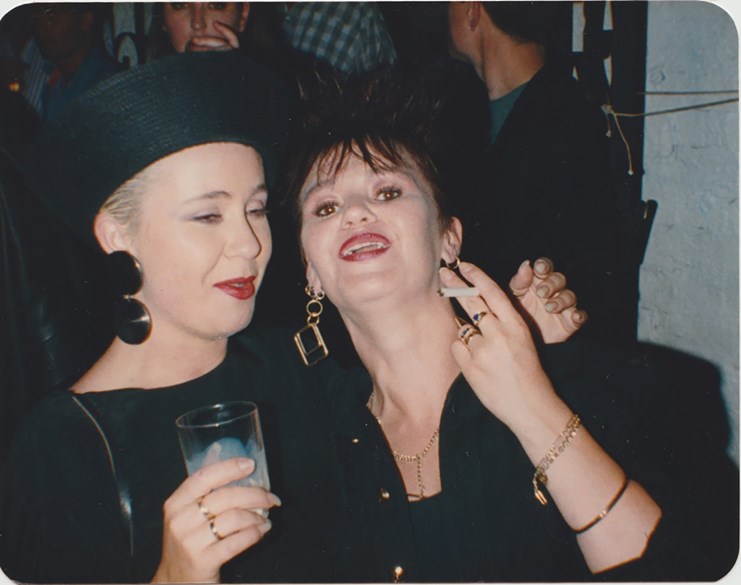
Michelle Follas and Amber Jewel Slines at Cause Celeb in 1987. Photo © Michelle Follas.
It was a time of individual creativity and excess and clubbers had plenty of options to acquire a suitable wardrobe across a whole gamut of price points from the likes of the aforementioned Patrick Steel and other couturiers, Kevin Berkahn and newcomer Adrienne Winkelmann, to the budget offerings at Cook Street Market, Opportunity shops and the Army Surplus Store. In between there were many funky small boutiques that came and went. Some such as Zephyr, Allison Hutton and SooKim, famous for her rubber skirts, emerged from the markets while stores like Blue Beat in Bledisloe Street, Joan of Arc in Victoria Street West, and Virus in O’Connell Street sprung up with their own unique and edgy style.
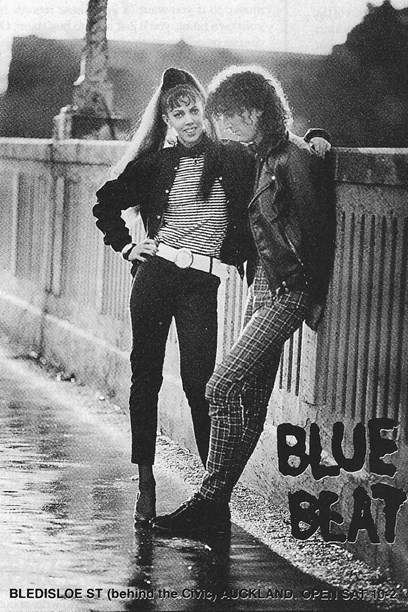
Ad for the Blue Beat store, 1986. Image © Blue Beat.
And those quirky fashions weren’t just for women with shops like Parachute, Monsoon Menswear and the Cutter of Newton catering to more masculine tastes.
Ads for Auckland menswear stores Parachute and the Cutter of Newton.
The decade also marked the beginning of a long career for many designers who were able to flourish in this environment and go on to become some of the stalwarts of the independent fashion scene of today such as Trelise Cooper, Zambesi, Street Life which became Workshop, WORLD, and Strangely Normal.
Clubbing was definitely not about letting your hair down rather it was all about getting that hair up, as high, full and dramatic as possible. This was the era of hair extensions, artificial hair for the naturally less well endowed. Hairdressers and their salons were the celebrities of the day and names like Eithne Curran at Crimpers, Greg Murrell at Servilles and Trevor Potter at Potter Blair still have cachet today.
1980s magazine ads for Crimpers. Photos by Max Thomson. Image © Max Thomson and Crimpers.
Nightclubs were also the venue of choice for that popular 80s phenomenon, the Fashion Extravaganza. With intriguing titles like Orgasmic Fantasia, the Zoned Fashion Play, Future Days and Scruff’s Birthday, audiences were challenged to outshine the on-stage action; a high energy show of the latest fashions from the designers of the day like Megan Douglas' label Obscure Desire.
A ChaCha magazine photo of an Obscure Desire show at the Six Month Club, 1985 (first image). Zoned Fashion Play at DKD,1986, organised by Nicola Ehau (pictured left), model in dress by Margaret Graham (right). Photo by Richard Scowen.
Despite Patrick Steel’s assessment of Steps nightclub it too hosted fashionable events such as Steps Ahead, a fashion and hair show with O’Connell Street neighbour Doris de Pont, ex-Zephyr designer Raewyn Alexander, Renaissance Menswear and High Street hair extension specialists, the Salon. With models such as Rachel Hunter and Mikhail Gherman the show and its audience made the social pages of ChaCha magazine. That magazine regularly featured the faces and antics of the club set in their 'Live Footage' section with late-night characters like Phaedra, King Harold and Barbaraella lifted from the dance floor and thrust in front of Darryl Ward’s camera.
Poster for Doris de Pont's fashion event in 1986, at Steps nightclub. Images © Doris de Pont.
Club style inspired designers to push their boundaries knowing that there was a ready audience eager to embrace a bolder dress sense. This signalled the emergence of a sort of dialogue between the club scene, fashion, and music, with the media also engaging with late-night personalities. Some were invited to model in live fashion shows and in magazine editorials while musicians such as Margaret Urlich and Dave Dobbyn were invited to model and lend their personal cachet to local fashion labels.
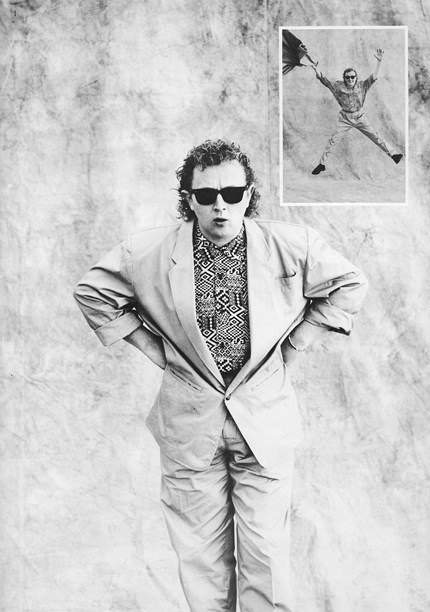
Dave Dobbyn photographed by Kerry Brown for ChaCha magazine, November 1986. Image © Kerry Brown and ChaCha magazine.
The dance music of the day, with its strong vocals front and centre and lyrics that conveyed both mood and narrative, was just crying out for an expressive and expansive response. In the 1980s, at the Brat, or wherever the latest venue was, there was never any shortage of performers dressed up in their party gear ready and willing to break out their moves on the dance floor.
Text by Doris de Pont. Banner image © Doris de Pont.
First published in the NZ Herald Weekend Magazine 23 September 2017, updated for NZFM May 2020.